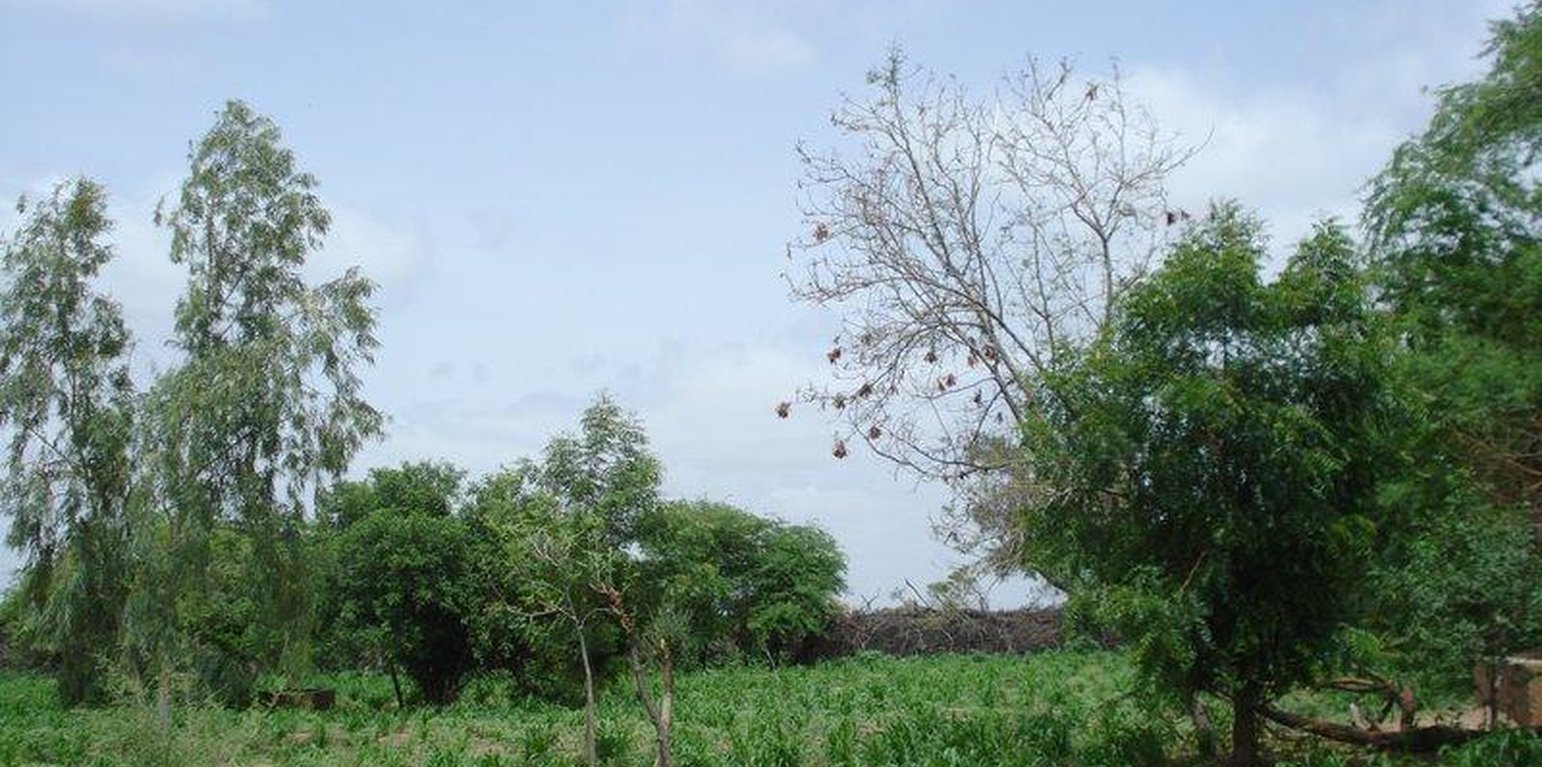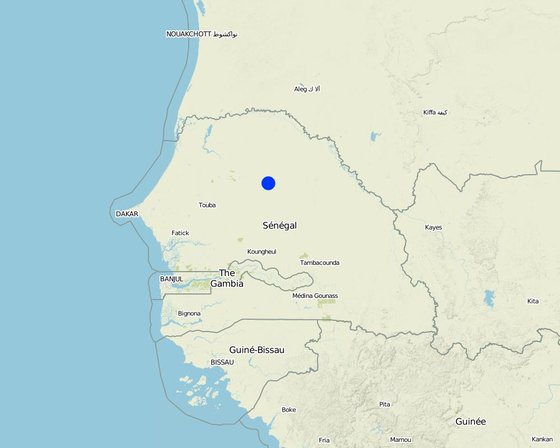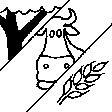



Main objectives are to increase the availability of vegetables in this zone far from the next market and to create an income source for women in the region. To mitigate the effects of wind erosion and gully formation in the plot and to protect it from cattle roaming a fence of dead wood and Prosopis juliflora seedlings has been constructed around it, which was meant to be a life fence after a certain time.
Establishment / maintenance activities and inputs: The initiative had been taken by a local "technicien agricole" which had assembled women of three villages and searched for local partenaires. The land on which the plot has been established was allocated to the group by the village chief. At the start, the project received support from the NGO Enda Tiers-Monde and the PAPEL (Projet d’Appui à l’Elévage) which has financed the construction of a small retention basin inside the plot to store water tapped from the local borehole. Each woman had the choice of construction 2m of the fence or to pay 1'000 CFA (US-Dollar: 2.25) compensation. Plot maintenance has been assured through the womens voluntary contributions. The extensive agent for "Water and Forest" has provided seedling of P. juliflora and other species on several occasions. Apart from expenses for seeds or seedlings for vegetable production the technology is not requiring any further financial inputs.
Natural / human environment: This SLM technology site is located in the sylvopastoral region of the Ferlo in the north of Sénégal. The agro-climatic zone is classified as semi-arid with mean annual precipitation of 300-400 mm. The main land use type in the area is extensive pastoralism followed by rainfed agriculture. Pastoralism is primarily practiced by transhumant Fula (Peulh) herders and further by Mauritanian Moor herders with herds of dromedaries. Vegetation cover in the area has largely been degraded due to cutting for domestic uses and cattle feeding, bushfires and overgrazing. The soil is exposed to wind erosion which carries away nutrients in the topsoil and therefore declines soil fertility. During intense rains in the rainy season, surface runoff is accelerated and leads to the formation of gullies and ravines. Quality of water sources has declined as they are being used by the local population for the purposes of body hygiene and laundry. Another factor of degradation are the oversized herds of dromedaries which consume large quantities of biomass, contribute to soil compaction due to the shape of their hooves and whose urine is perceived as noxious to the development of herb cover. Despite the various types of degradation, pastoralism and rainfed agriculture guarantee a certain food security for the local population and they have rarely experienced famines.

ສະຖານທີ່: Barkédji, Louga, ຊີນີໂກ
ຈໍານວນ ພື້ນທີ່ ທີ່ໃຊ້ ເຕັກໂນໂລຢີ ທີ່ໄດ້ວິເຄາະ:
ການແຜ່ກະຈາຍຂອງເຕັກໂນໂລຢີ: ແຜ່ຂະຫຍາຍຢ່າງໄວວາໃນພື້ນທີ່ (approx. < 0.1 ກິໂລແມັດ2 (10 ເຮັກຕາ))
ວັນທີຂອງການປະຕິບັດ: 10-50 ປີ ຜ່ານມາ
ປະເພດຂອງການນໍາສະເໜີ






| ລະບຸ ປັດໃຈ ນໍາເຂົ້າ ໃນການຜະລີດ | ຫົວໜ່ວຍ | ປະລິມານ | ຕົ້ນທຶນ ຕໍ່ຫົວໜ່ວຍ (CFA) | ຕົ້ນທຶນທັງໝົດ ຂອງປັດໃຈຂາເຂົ້າ ໃນການຜະລິດ (CFA) | % ຂອງຕົ້ນທຶນທັງໝົດ ທີ່ຜູ້ນໍາໃຊ້ທີ່ດິນ ໃຊ້ຈ່າຍເອງ |
| ອື່ນໆ | |||||
| Water | ha | 1.0 | 40.0 | 40.0 | |
| ຕົ້ນທຶນທັງໝົດ ໃນການຈັດຕັ້ງປະຕິບັດ ເຕັກໂນໂລຢີ | 40.0 | ||||
Weak improvement of income